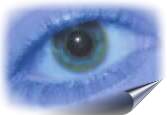
English
language |
The Euro banknotes
On the front of the banknotes, windows and gateways symbolise the European spirit of openness and co-operation. The 12 stars of the European Union represent the dynamism and harmony between European nations.
To complement these designs, the reverse of each banknote features a bridge. The bridges symbolise the close co-operation and communication between Europe and the rest of the world.
The first series was released from 2002 to 2013, they wa designed by the Austrian Robert Kalina.
The second series »Europa Series« since 2013 has been designed with extended security features. Similar to the first series, the motifs were designed this time by Reinhold Gerstetter. Since Bulgaria's accession to the EU, the currency designation in addition to EURO and ΕΥΡΩ is written as well in Cyrillic ЕВРО.
Serial number
The serial number of the euro is made up of the following elements:
Code of the country of issue, a ten-digit, consecutive serial number and a check digit.
Country of publication:
- L = Finland
- M = Portugal
- N = Austria
- P = Netherlands
- R = Luxembourg
- S = Italy
- T = Irland
- U = France
- V = Spain
- Y = Greece
- X = Germany
- Z = Belgium
Printer code
A six-digit code (short code) is printed in various places on the front of the euro banknotes. The first letter indicates the printer of the euro, followed by 3 digits for the print series or plate number and finally the position on the sheet::
Beispiel: M002B6
M: Druckerei (hier: Madrid)
002: Druckserie oder Plattennummer
B6: Position auf dem Druckbogen:
Zeile 2 (A=1, B=2...), Spalte 6
Printing house
- A Bank of England Printing Works, Loughton, Essex, United Kingdom
- C AB Tumba Bruk, Tumba, Sweden
- D Setec Oy, Vantaa, Finland
- E Oberthur, Chantepie, France
- F Österreichische Nationalbank, Wien, Austria
- G Johan Enschedé & Zn., Haarlem, Netherlands
- H De La Rue, Gateshead, United Kingdom
- J Banca d'Italia, Rom, Italy
- K Central Bank of Ireland, Dublin, Irland
- L Banque de France, Chamalières, France
- M Fábrica Nacional de Moneda y Timbre, Madrid, Spain
- N Bank of Greece, Athen, Greece
- P Giesecke & Devrient, München/Leipzig, Germany
- R Bundesdruckerei, Berlin, Germany
- S Danmarks Nationalbank, Kopenhagen, Denmark
- T Nationale Bank van België/Banque Nationale de Belgique, Brüssel, Belgium
- U Valora S.A., Carregado, Portugal
Die Nationalbanken konnten Ihre Druckaufträge frei vergeben. So wurden die
spanischen 200 und 500 Euro-Noten zum Beispiel in Belgien gedruckt.
... back |
![]()















